Click below to see our plants alphabetically listed by common name with their cures and cooking ideas
A B C D E F G H I J K L M N O P Q R S T U V W X Y Z Click for a list of my Special Pages
Menu of All My Special Pages
Agave
Aloe
Amaryllis
Angel Trumpet Tree
Anthuriums
Bananas & Plantains
Begonia
Botanical Gardens
Bougainvillea
Bromeliad
Cactus
Cactus & Succulent Mysteries
Calatheas
Camellias
Canna Lilies.
Chile Peppers
Clerodendrum
Coffee
Coleus
Croton
Dahlia
Devils Trumpets
Ferns
Flower Mysteries
Frangipani
Garden Furniture & Fixtures
Healthy Naturally
Heliconia
Hibiscus
Landscaping
Lilies
Mystery Plants
Orchids
Palms & Sagos
Philodendrons
Roses
Succulents
Water Lilies&Water Gardens
Wildflowers
S earch for Latin names and more here!
Quercus aegilops L. syn.
Quercus ithaburensis subsp. macrolepis (Kotschy) Hedge & Yalt.Benefits: Greece through to TurkeyPhotographed: In the Botanical Garden in Palermo, Sicily, in
Italy in 2012.Planting and Care: This is a tree
probably
best left to grow in its native places or in Botanical Gardens. Text and Photograph ©GreenGardeningCookingCuring.com
2014/2018
Oakleaf
Lettuce Lactuca sativa Benefits: Photographed: In our garden at Lake Atitlan in Guatemala in
2014.Planting and Care: Plant a pot of romaine and wait. Text and Photograph ©GreenGardeningCookingCuring.com
2014
Oats Avena
sativa Benefits: From: Near
and Middle EastPhotographed: Planting and Care: Oats seem to be an easy crop to plant
and bring to harvest, when the real work begins in preparing them for the
kitchen. They are planted in very early spring and harvested before the heat
of full summer at the end of July and into August. Text ©GreenGardeningCookingCuring.com
2014
**Okra Hibiscus
esculentus I consider okra inedible, but the dried vegetables are beautiful
and make a wonderful dried flower arrangement with just a little
imagination.Benefits:
From: AfricaPlanting and Care: This is an easy grower in a Caribbean
environment. It seems to require little, but hot sun and sometimes
water to thrive
and produce prolific amounts of the vegetable okra. Unfortunately,
I can't bear the slimy quality of the vegetable, but if you can,
this is one of the best plants to get started with in your hot climate
garden. Text
©KO 2010 and ©GreenGardeningCookingCuring.com 2018
Oleander Nerium
oleander L.Benefits and Cautions: From: Far eastern Europe.Planting and Care: You are on your own for this one. But, oleander
is a popular highway planting in California where it is hot, dry
and inhospitable much of the year, so you won't have any problem
getting one to grow in your yard, where ever it is.Warning: Oleander is poisonous.Text
©KO 2008/2010 and ©GreenGardeningCookingCuring.com
2013/2018
Olea with Olea
Europea being the main source of olive oilBenefits: Olive oil has features that
may enable it to work as a pain reliever like ibuprofen. It is also a healthy
alternative to the GMO oils common in the US, corn, canola and soy. Use extra
virgin on your salads if you like the taste and the lighter variety for frying
as it has a relatively high burn temperature. I don't use much of anything else.From: Coastal Mediterranean areasPhotographed: To the right at Lu
Baruni Campground in Scopello, Text
and Photographs ©KO 2008 and ©GreenGardeningCookingCuring.com
2013/2018
To
see a mom and pop, mostly pops, olive oil factory we visited
in Corfu, Greece, click
here . It's wonderful.
OLIVE TREE IN BLOOM From the roadside as we traveled through Sicily in 2012.
OLIVE TREE FLOWERS DETAIL From the roadside as we traveled through Sicily in 2012.
OLIVE TREE From the roadside as we traveled through Sicily in 2012.
OLIVES
RIPENING I Photographed: In
the (Ortobotanico ) Botanical Garden in Naples, Italy, in 2014.
OLIVES
RIPENING II Photographed: In
the (Ortobotanico ) Botanical Garden in Naples, Italy, in
2014.
Allium
cepa Hence, they use a lot of fungicides and insecticides.Benefits: Let's
face it, onions are just plain good for you! They don't make you stink like garlic
and give you all the same benefits. What could be better than that?From: The
exact place of origin of onions is not known, but they have been around a long
time, even drawn in hieroglyphics in Egypt.On
Hacienda San Buenaventura land by Lake Atitlan in Guatemala.Planting and Care: First
decide if you have a long enough growing season to use seed. If your growing
season is shorter, consider buying onion sets which I have always used. Plant
either of the options in fertile
well drained soil in full sun. Try to avoid clay soils as their natural sulphur
content will add to the pungency of your onions. Water them occasionally as too
frequent watering can bring problems. I recently read that onions are light sensitive
and will grow and then decline with the number of hours of sunlight in an average
day. Toward fall before receiving a heavy frost, knock over the onion foliage
and let it dry in warm sunny days. When it is thoroughly dry, pull up the onions
and let them rest on dry soil for a few days. Meanwhile identify a good storage
place, one that is cool, but not cold, and as free of air born moisture as possible.
In New England, I used our attic and it worked out just fine. Text
and Photograph ©KO 2010 and ©GreenGardeningCookingCuring.com
2014/2018
Aphelandra
sinclairiana Benefits: The Aphlelandra sinclairiana attracts
butterflies and hummingbirds. From: Tropical areas of the AmericasPhotographed: In the Botanical Garden at the Hotel Atitlan
on Lake Atitlan in Guatemala in 2010..Planting and Care: This is another of my favorite plants
as it will perform beautifully in its preferred semi shady setting in the
garden. It appreciates routine watering and is happiest if the temperature
doesn't fall below 50° F. though it will accommodate an occasional fall
to 30° F. Text and Photographs ©GreenGardeningCookingCuring.com
2013/2018
Shrub
Mystery 3 and 3A solved by Ursula G. living in Southern Germany
Planting and Care: If you have a place for an orange tree in
your garden, you'll probably want to purchase a tree that has been grafted to
give you the strength of the base tree and the wonderful oranges of the graft.
It is best to talk with your local college or university agriculture department
staff about the type of tree that will have the most success in your area.Text
and Photograph ©KO 2010 and GreenGardeningCookingCuring.com 2013/2018
Primula
vialii Benefits: I have read that it is tolerant of deer, but I wouldn't
bank on that too much.Photographed: In the Coastal Maine Botanical Gardens, Boothbay
Maine, 2013.Planting and Care: This perennial loves a rich soil
in a moist place that may be sunny in cooler climates, but probably
prefers shade in warm climates. It definitely does not like to be in
a place
that dries out nor is it tolerant of a freezing winter. It is tolerant
of soil types and pH levels. Text and Photograph ©GreenGardeningCookingCuring.com
2014/2018
With
My Great Appreciation, My #23 Mystery was solved by Sara V.,
from Bristol, in the UK
Bauhinia spp. for general colors
or Bauhinia
purpurea for purple flowering treesBenefits: Southeast Asia, India and southern ChinaPhotographed: In Panajachel, Guatemala.Text
and Photographs ©GreenGardeningCookingCuring.com 2015/2018
**Oregano,
Greek Oregano Herb Origanum
heracleoticum or Origanum vulgare syn. Majorana From: The Mediterranean. In 2007
we traveled to Greece, visiting many islands along with the mainland.
Wherever we went I asked about Greek oregano seeds and was always
told that the plant was essentially a weed. It grew everywhere so
no one grew it in their garden and no one saved the seeds. I was
very disheartened. Planting and Growth: If you have Greek oregano seeds think
of them as similar to marjoram. Oregano likes a sweet soil (alkaline), full sun
or semi shade
and a reasonable amount of water. Text ©KO
2008 and ©GreenGardeningCookingCuring.com 2018
Mahonia sp. Benefits: East Asia Photographed: In the Botanical
Garden in Naples, Italy.Planting and care: In a cool climate
the Oregon grape or mahonia will prefer to be planted
in full sun. Planted in tropical gardens it prefers
partial
shade. It also likes regular rainfall or watering
to be at its best.Text and Photograph ©GreenGardeningCookingCuring.com
2012/2018
Shrub
Mystery solved by
Ursula G. living in Southern Germany
Organic
Foods and Organic Farming Reasons
for eating organic foods and raising organic produce are evident,
but when the bugs get going, all too often it is easy to reach for
commercial poisons. And, doesn't the idea of not ever having
to weed sound wonderful? Well....here are some reasons you might
want
to put a little more commitment behind your choice to go organic. I talked
to everyone I could about what was going on and in the end learned
that Monsanto had a large footprint in Guatemala's agriculture.
I believe Monsanto was illegally doing much of their new GMO
crop testing there along side of their GMO seed sales and the profitable
sales of their now infamous
Roundup. In time, if I didn't grow it in our garden, I wouldn't eat
it.
**Oyster
Plant Please
See the "B" Page -- Boatlily
© 2019 GreenGardeningCookingCuring.com. All rights reserved
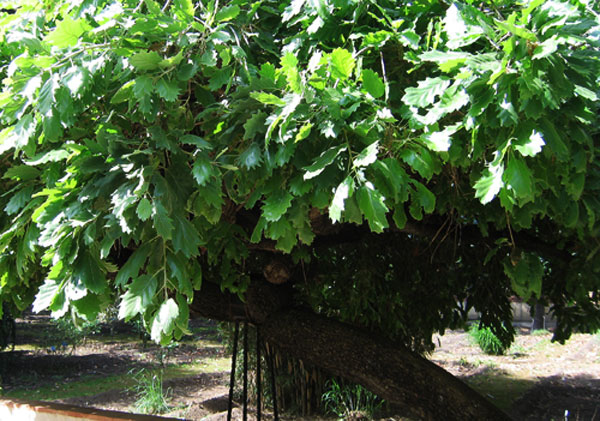 Tabor
Oak, Valbnea Oak, Valonia Oak Quercus aegilops L. syn.
Quercus ithaburensis subsp. macrolepis (Kotschy) Hedge & Yalt.
Tabor
Oak, Valbnea Oak, Valonia Oak Quercus aegilops L. syn.
Quercus ithaburensis subsp. macrolepis (Kotschy) Hedge & Yalt.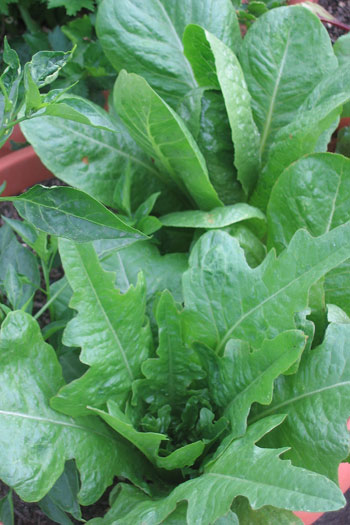 **Oakleaf
Lettuce Lactuca sativa
**Oakleaf
Lettuce Lactuca sativa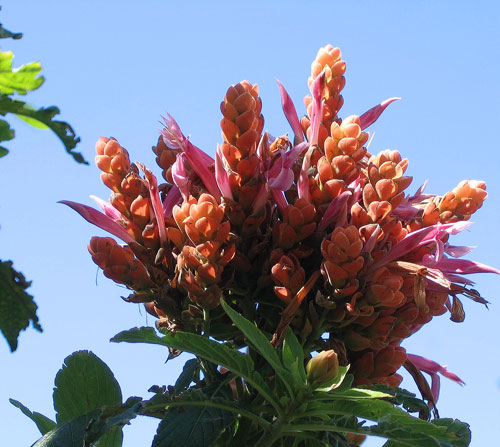
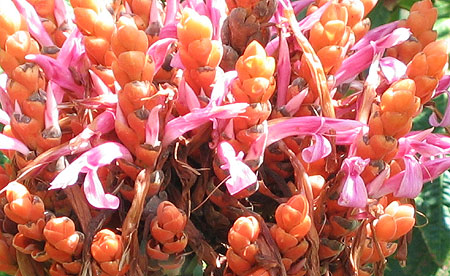
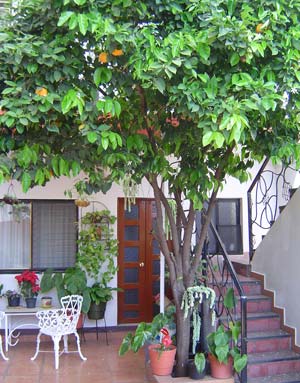 Orange
Tree -- Variety Unknown
Orange
Tree -- Variety Unknown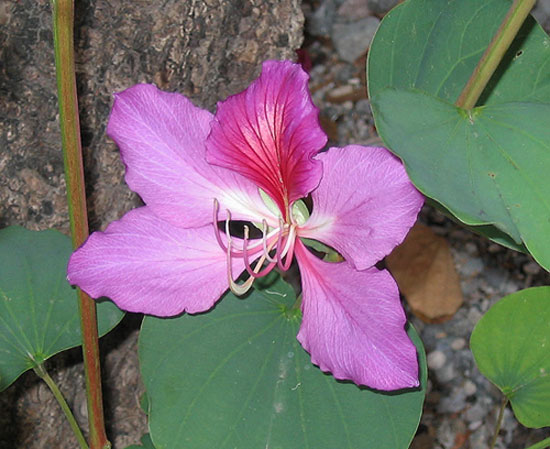 **Orchid
Tree, Camel's Foot, Butterfly Tree, Hawaiian
orchid tree. Bauhinia spp. for general colors
or Bauhinia
purpurea for purple flowering trees
**Orchid
Tree, Camel's Foot, Butterfly Tree, Hawaiian
orchid tree. Bauhinia spp. for general colors
or Bauhinia
purpurea for purple flowering trees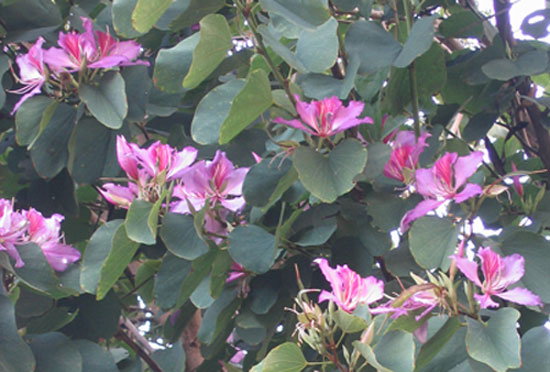
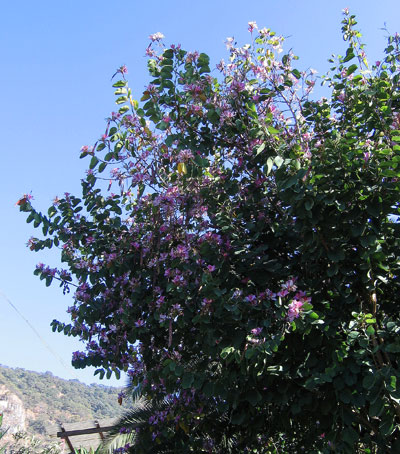
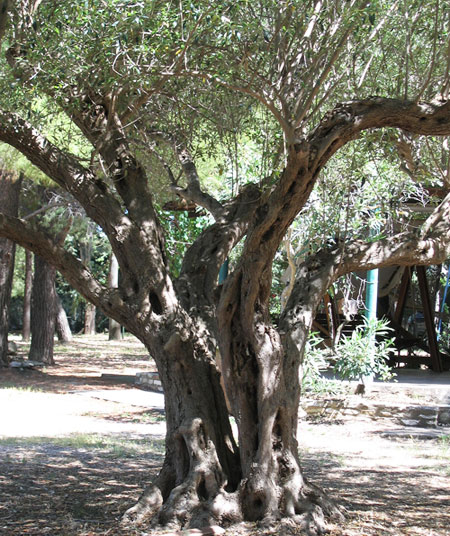
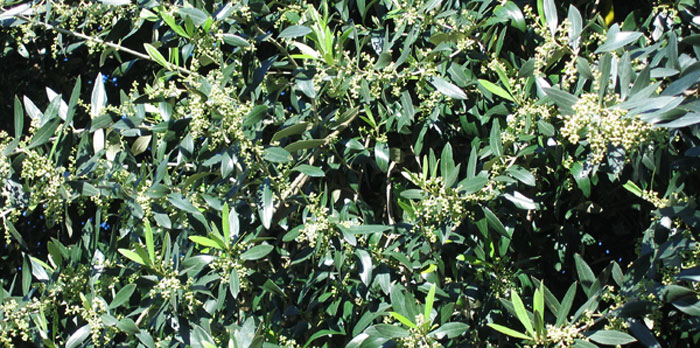
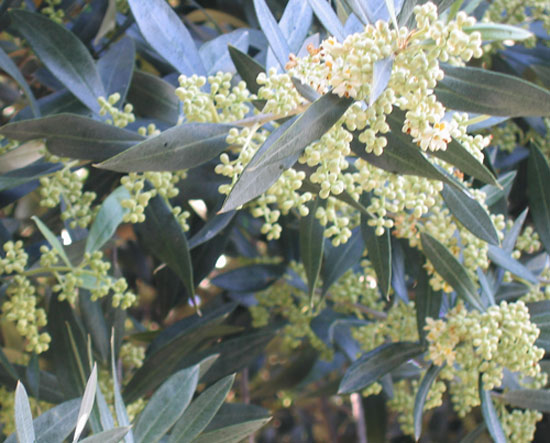
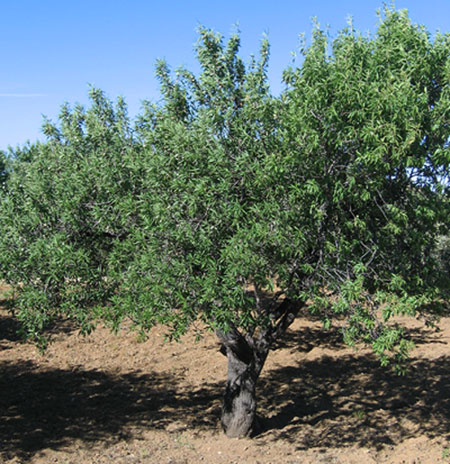
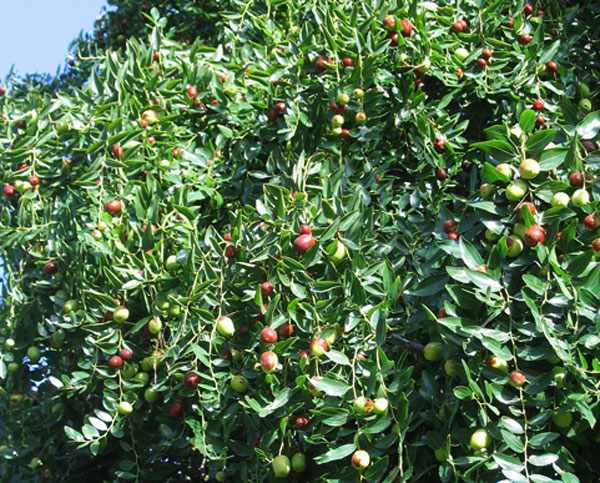
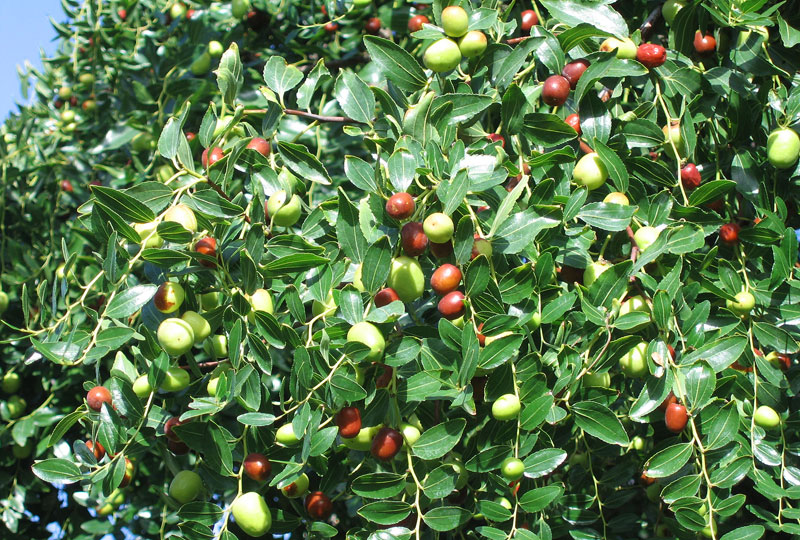
 **Onions Allium
cepa
**Onions Allium
cepa
 Oregon
Grape, Mahonia, Holly Grape Mahonia sp.
Oregon
Grape, Mahonia, Holly Grape Mahonia sp.